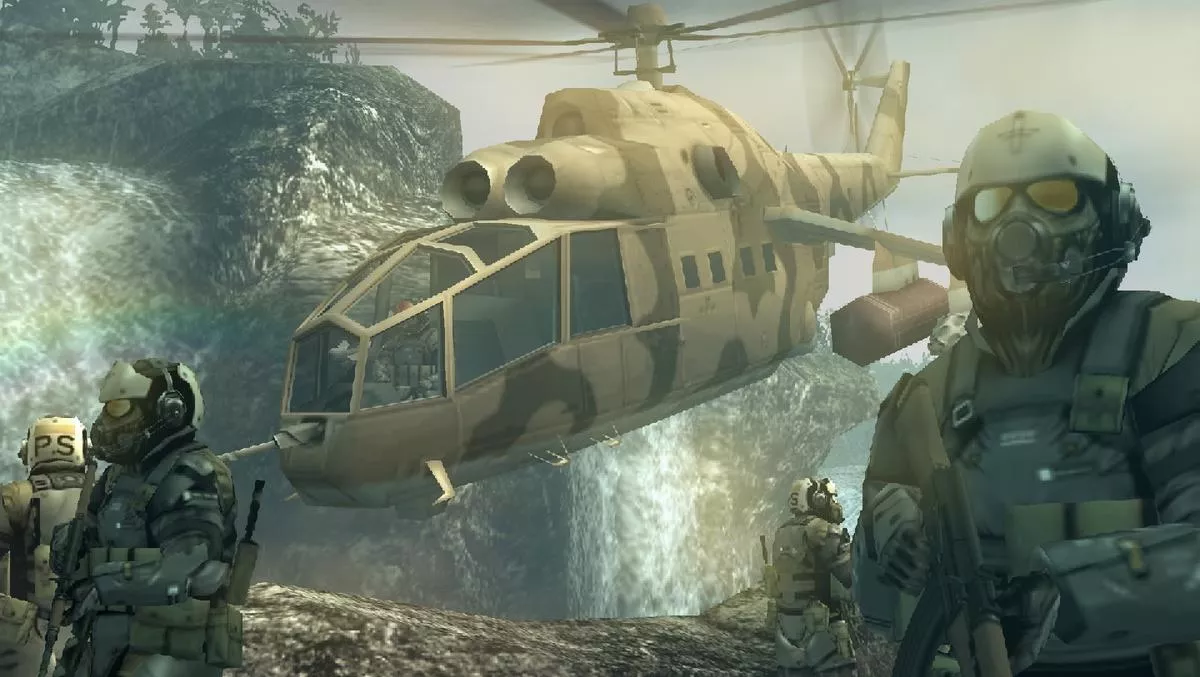
METAL GEAR SOLID: PEACE WALKER
METAL GEAR SOLID: PEACE WALKER is the first PlayStation Portable Metal Gear game to be directed by the series' founder, Hideo Kojima, who considers it to be Metal Gear Solid 5 in all but name. Set in 1974, the game features Naked Snake AKA Big Boss, the genetic "father" of Solid Snake from the PlayStation 3's MGS4. Costa Rica, having no military force of its own, has called upon the services of Snake's mercenary outfit, Militaires Sans Frontières (Soldiers without borders).
Snake and his team must stop a sinister military force that has set itself up on the peaceful island and is hell-bent on escalating the Cold War into a full-blown global conflict. As to be expected, the classic Metal Gear Solid stealth gameplay returns in a miniature form that will be instantly recognisable to fans of the series. Peace Walker requires patience; there is nothing to be gained by running and gunning. You must use Snake's abilities and equipment to take out guards quickly and silently if you are to succeed. But Peace Walker is not just about sneaking around.
The game also requires players to effectively manage Snake's base of operations. Personnel are "recruited" by extracting guards during missions. They are then assigned to the various departments on the base, such as the combat team, R-D, medical, and even the catering crew. The precision required to control Snake on the PSP takes a bit of getting used to.
To the uninitiated, slowly walking up to an enemy using the analogue stick can be a hair-trigger experience. Any involuntary twitch will send Snake clumsily hurtling into the enemy, the resulting attempt at close-quarters combat (CQC) degrading into a pitiful grasp at thin air with Snake subsequently pumped full of lead. With practice the controls become easier to use, but you'll still find yourself longing for that second analogue stick. Peacewalker has some of the best graphics you'll see on a handheld. The lighting effects are more akin to those you would expect on the PS3.
The story is told through a mixture of in-game cutscenes and gorgeous graphic-novel style animations. The stunning artwork is by Aussie artist Ashley Wood, who did the MGS Digital Graphic Novel as well as the cutscene art for Portable Ops and, more recently, the art for the Xbox 360's Halo 3: ODST. It's almost a shame to see such a quality offering constrained by the PSP's little screen.
Owners of the later PSP 2000 and 3000s will get more out of the game if connected directly to a TV set, the larger visuals making the game feel more like a "proper" MGS game. It is pretty clear that the game has been built primarily with co-op multiplayer in mind. This is probably great if you are on the Tokyo subway surrounded by other players happy to link up with you. It's not so much fun in Auckland where PSP owners, especially PSP-owning MGS fans, are a bit thinner on the ground.
Unless you have a load of like-minded mates you're never going to experience the game's full potential. Metal Gear Solid: Peacewalker is beautiful, tricky, confusing and rewarding all at the same time. It lacks the epic feel of its big console counterparts, despite its obvious aspirations.
The multiplayer aspect is a bit wasted on a Western audience, but once you have mastered the controls Peacewalker reveals itself as a worthy addition to any PSP game library.

